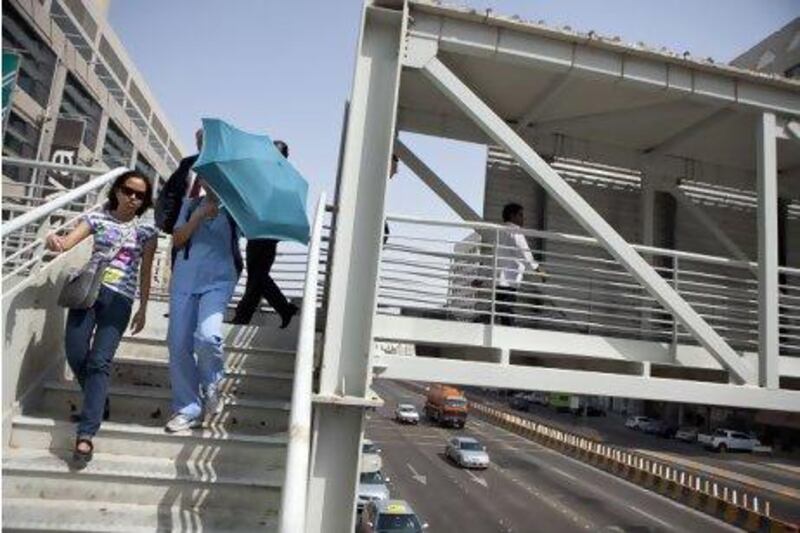ABU DHABI // The emirate’s roads will be “fully rehabilitated” in the next 20 years, the Urban Planning Council says.
“I’m confident to say that we are on track for the Abu Dhabi vision,” said Ibrahim Al Hmoudi, transport planning department manager at the UPC, on the sidelines of the forum yesterday.
Mr Al Hmoudi’s department introduced the Urban Street Design Manual in 2010 with the aim of gradually reducing Abu Dhabi’s reliance on cars.
In line with the principles of Abu Dhabi Vision 2030, the manual aims to promote walking, enhance connectivity through public transport and create a sustainable urban environment.
“Our priorities emphasise the need to provide a safe environment for pedestrians, transit users and cyclists as they remain the most vulnerable users on urban streets,” Mr Al Hmoudi said.
Pedestrians account for almost a third of all road deaths, he said.
The main causes for crashes in the capital were speeding, the long distance between junctions and a lack of safe mid-block crossing, weaving and misused right-turn lanes.
The manual’s solution is to stop cars speeding by narrowing lanes, making junctions more compact, introducing a revised design for right-turn lanes and installing features such as speed bumps.
Mr Al Hmoudi said bringing in these measures could lower the incidence of pedestrian fatalities by as much 20 per cent.
Streets will be regenerated in coming years, Mr Al Hmoudi said, particularly in areas with significant pedestrian use. The manual’s preferred design is called a “complete street”, with ample safe crossings, pedestrian signals, cycle lanes, and shaded public areas and walkways.
"Through a balanced approach to street design, the manual will guide Abu Dhabi's transition from a motor vehicle-oriented society to a multi-modal society," Mr Al Hmoudi said.
rruiz@thenational.ae






